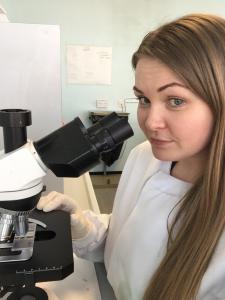New evidence to help fight the yeast superbug that experts say is a real threat to our global health
Chlorhexidine appears to be effective in disinfecting contaminated hospital environments.”
MANCHESTER, UNITED KINGDOM, March 15, 2017 /EINPresswire.com/ -- UK scientists are reporting that a deadly form of a drug resistant yeast that has caused hospital outbreaks and deaths across the world is sensitive to the disinfectant most widely used to sterilise surgical instruments.— Dr Riina Rautemaa-Richardson
In a new study published the team discovered in laboratory experiments that a recently-discovered human fungal pathogen, Candida auris readily forms impermeable layers called biofilms that are resistant to most drugs used to treat fungal infections.
Significantly the researchers were also able to show that these Candida auris biofilms are sensitive to the disinfectant chlorhexidine, which is standard use in hospitals to sterilise instruments and wipe the patients’ skin before surgery. It could mean a breakthrough for doctors trying to control the spread of infection in hospitals.
Working with experts in Glasgow, Manchester and Bristol, medical mycologist Dr Leighann Sherry compared Candida auris with other Candida species commonly causing infections in humans. She found it had an ability to form biofilms – impermeable layers of microorganisms that can grow on many different surfaces. Leighann, a fungal researcher at University of Glasgow, explains: “These features not only contribute to its virulence, but also to its survival in hospital environments, increasing its ability to cause outbreaks.”
Candida auris was first reported in 2009 from the ear canal of a woman in Japan. More recently, it has been associated with life threatening invasive diseases such as pericarditis (swelling around the heart) and bloodstream and wound infections.
It has caused hospital outbreaks in America, India, Kuwait, Pakistan, Venezuela and Colombia, and in a UK intensive care unit, where 20 per cent of patients, found to be carry Candida auris, developed a bloodstream infection, which often results in long hospital stays, high medical costs, and poor outcomes.
Emerging Infectious Diseases
Researchers found the ability of this organism to form biofilms made it resistant to most drugs used for the treatment of severe fungal infections. They also discovered that normal concentrations of the skin disinfectant chlorhexidine were active against Candida auris biofilms.
Dr Riina Richardson, Consultant in Medical Mycology at the University Hospital of South Manchester and Senior Lecturer in Infectious Diseases at The University of Manchester, was instrumental in determining the study and believes the results are clinically significant and merit further exploration. She says: “ Although the exact mode of transmission in the hospital setting is unknown, it appears that Candida auris may substantially contaminate the rooms of colonised or infected patients. These factors, together with its resistance to most antifungal agents, may well explain why it is an emerging pathogen.
“Importantly, these results suggest that it is unlikely that its spread and prevalence could be controlled with antifungal stewardship approaches alone but that infection prevention measures are critical. Chlorhexidine appears to be effective in disinfecting contaminated hospital environments”, she adds.
Due to the interest in this emerging fungal pathogen, Dr Sherry has been awarded an ESCMID Research Grant 2017 to investigate this organism in greater detail.
NOTES TO EDITORS
Yeasts are fungi, and antifungal drugs are in short supply, in part because they're not something that drug manufacturers see a big market for. Currently there are only three classes of antifungal drugs (compared to more than a dozen families of antibiotics), and Candida auris is showing resistance to all three.
In every country where this yeast has appeared, the people who got sick had already been hospitalised. American patients, for example, had cancers or grave chronic conditions. That meant they'd already received lots of drugs, which could undermine their immune systems, and they were connected to lots of equipment, which could spread the organism onto their skin or into their bodies.
Dr Leighann Sherry is a 29-year-old medical mycologist based at the School of Medicine, Dentistry and Nursing at the University of Glasgow. She began her scientific career at Glasgow Caledonian University in 2005, where she undertook a B.Sc. (Hons) in Microbiology. A requirement of the course was to go out on placement to the Glasgow Dental School where she was expected to design her own research project. It was during this time she discovered a passion for research, specifically in the treatment of fungal infections. She pursued this interest by undertaking a Ph.D. at the University of Glasgow, where she investigated the impact of fungal biofilms within bloodstream infections, and evaluating novel antimicrobials to be used as alternative therapeutics. Following her PhD, she pursued postdoctoral research positions at the Public Health Research Institute, Newark, New Jersey and the University of the West of Scotland before returning to the University of Glasgow. Her current research focuses around the Candida biofilm infections and developing alternative strategies for the effective management of these.
Susan Osborne
Goodwork, Director of Communications
+44 (0)208 747 1488
email us here



